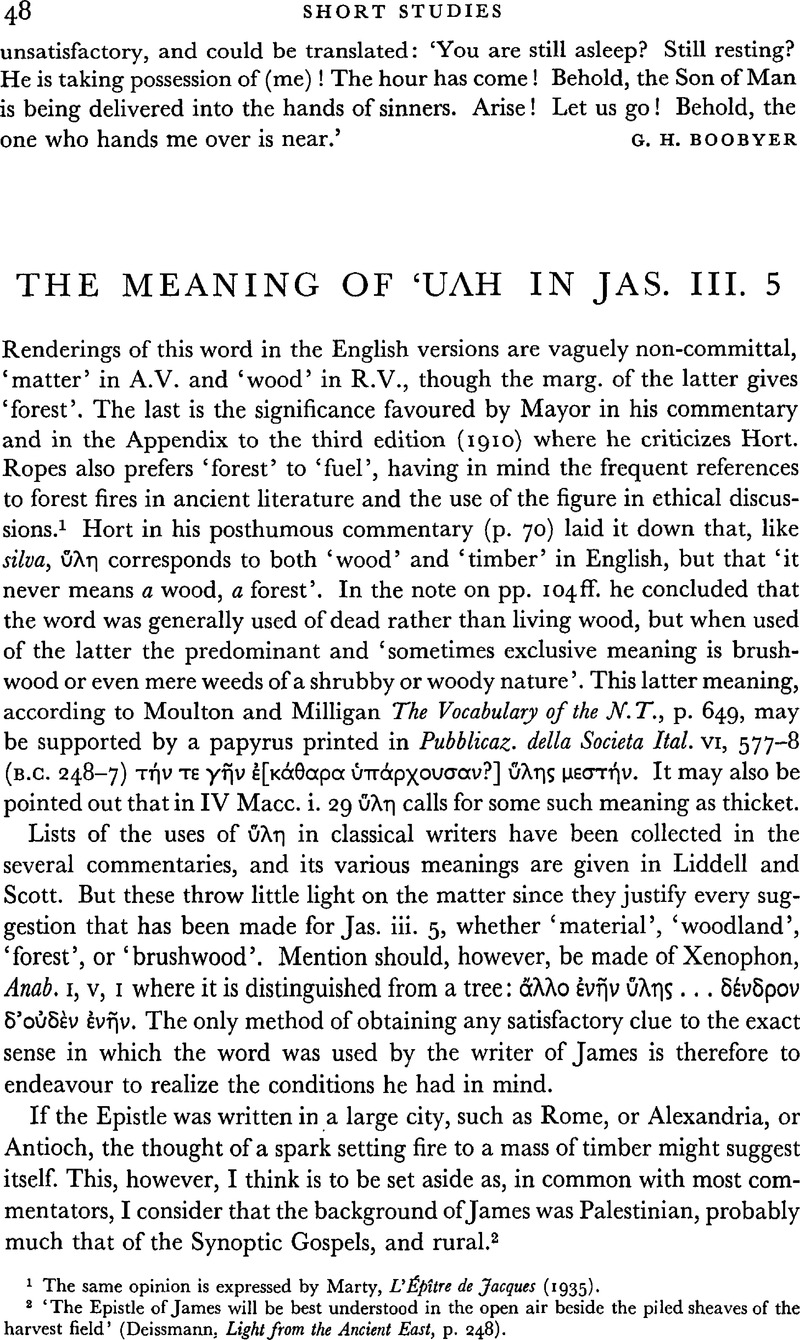No CrossRef data available.
Article contents
The Meaning of 'Uh in Jas. iii. 5
Published online by Cambridge University Press: 05 February 2009
Abstract

- Type
- Short Studies
- Information
- Copyright
- Copyright Cambridge University Press 1955
References
page 48 note 1 The same opinion is expressed by Marty, L'ptre de Jacques (1935).
page 48 note 2 The Epistle of James will be best understood in the open air beside the piled sheaves of the harvest field (Deissmann, Light from the Ancient East, p. 248).
page 49 note 1 Smith, G. A., Hist. Geog. of the Holy Land, p. 80.Google Scholar
page 49 note 2 This is an obscure verse where ![]() may originally have been used in the sense of honeycomb.
may originally have been used in the sense of honeycomb.
page 49 note 3 This should be xxix. 17.
page 49 note 4 It is interesting to observe that modern Arabs can refer to brushwood as trees. Cf. Letters of Gertrude Bell I, p. 225: My companions scatter over the plain with axes to gather firewood, which is a little dry plant called Shih, six inches high at the highest. We speak of it as trees.
page 49 note 5 Here and Isa. x. 34 a distinctive word ![]() is used for thicket which is found elsewhere only in Gen. xxii. 13. The root which means interweave occurs in the verbs in Nahum i. io, Ezek. viii. 17.
is used for thicket which is found elsewhere only in Gen. xxii. 13. The root which means interweave occurs in the verbs in Nahum i. io, Ezek. viii. 17.


